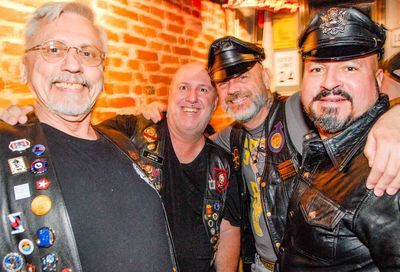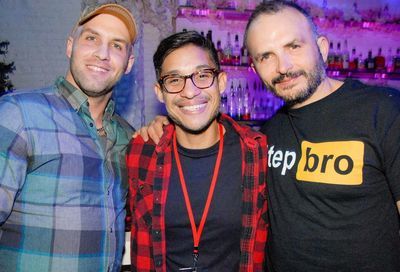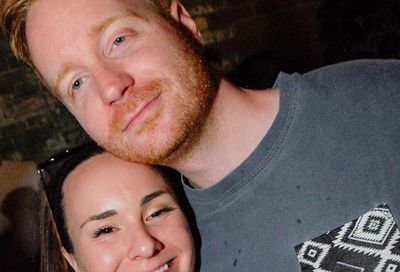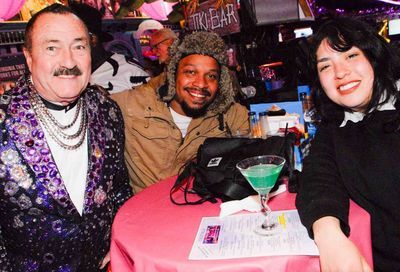Time's Trails
Paul K. Williams explores the past one page, block or room at a time
Even if you’ve never met Paul K. Williams, if you live in the D.C. area it’s a pretty safe bet you’ve noticed one of his many books. With their often sepia-toned photo covers, his little gems of bound, local history are plentiful.
“I’ve done 11 books based on neighborhoods of Washington, and two from upstate New York,” says the 43-year-old gay historic preservationist, who shares a home with his partner, freelance writer Gregory Alexander, in Baltimore’s Charles Village. “That was all through Arcadia Publishing. My partner and I just did one on [Baltimore’s] Charles Village through The History Press.
“Greater U Street has sold the most. It was one of my earlier ones. That’s probably my favorite one. It was a lot of fun to research. There were a lot of firsts we documented.”
As one might imagine, documenting “firsts” is to a historian what finding a previously undiscovered spice might be to a chef. That thrill aside, Williams just seems to enjoy the richness of history, something he learned from his parents after moving into an old Victorian house in Skaneateles, N.Y.
“We renovated one room at a time,” he recalls, explaining that through that hands-on exercise with his father, he came to care not so much about the carpentry, but the history. “I like to know who was there before me. Out of respect, I guess.”
Aside from the books, Williams’ appreciation of history and wanting to preserve it has manifested itself in a number of ways. He is the executive director of the Historic Dupont Main Streets organization, working to promote and preserve the nature of the neighborhood. Williams also researches “house histories” on a contract basis, supplying clients with the historical backgrounds of their homes. Then there are the “heritage trails.” Williams served as the project director of “City Within a City: Greater U Street Heritage Trail,” unveiled about a decade ago.
“Some of the old-timers of U Street were still alive,” he says of the period when he worked with trail historian Kathryn S. Smith researching the area, pointing to particular assistance from Virginia Ali who, along with husband Ben, owns Ben’s Chili Bowl, a U Street anchor since the 1950s.
“I got access once they realized I knew my history,” Williams remembers. “We discovered Duke Ellington was a resident of the neighborhood. His first paid performance was at the True Reformer Building [1200 U St. NW], around 1914. Admission was 5 cents. I think he was only 14 years old.”
While Williams has been able to include some pieces of GLBT significance in heritage trails — produced with the Historical Society of Washington, D.C., the Downtown DC Business Improvement District, and Cultural Tourism DC — he’s not certain what landmarks he might include on a heritage trail focused entirely on the District’s GLBT history.
“That’s a difficult one,” he says. “So many are either gone or completely non-recognizable. It might have been a very prominent gay bar, like the Crazy Cat Club — a cool, bohemian place from the 1920s…outside in a tree right across from the Green Lantern. Now it’s just a stucco box.”
Williams says he recognized the tree-top bohemians’ speakeasy in an old photo thanks to a significant feature of its neighbor: cast-iron “bumpers” on the corners of the carriage house that is home to the Green Lantern bar off of Thomas Circle.
“It was a place where women could go and not act prim and proper. Also, it was a place where gays and lesbians could discretely meet…. I tried to introduce a little bit of gay and lesbian history into the Dupont book, but it’s really hard to locate the photographs. They’re not really in the public archive yet — they’re in someone’s photo album.”
Despite the challenges of preserving GLBT history, Williams says he’s encouraged by gay-rights pioneer Frank Kameny’s Foxhall-area house being added the D.C. Inventory of Historic Sites.
“It’s not architecturally significant, but it went in for the importance of the person, which is hard. It’s also rare to do that while the person is living.”
While historic designations may be relatively difficult to come by, Williams is doing his part to make it a little easier. His next project is working on a book that will allow people with no formal training in historic preservation to create their own “house histories.”
For more about Williams’ work, visit www.washingtonhistory.com or call 202-213-9796. For information about D.C. heritage trails, visit www.culturaltourismdc.org. The Rainbow History Project offers a variety of downloadable, self-guided, GLBT-related tours by visiting www.rainbowhistory.org/directory.htm.
Support Metro Weekly’s Journalism
These are challenging times for news organizations. And yet it’s crucial we stay active and provide vital resources and information to both our local readers and the world. So won’t you please take a moment and consider supporting Metro Weekly with a membership? For as little as $5 a month, you can help ensure Metro Weekly magazine and MetroWeekly.com remain free, viable resources as we provide the best, most diverse, culturally-resonant LGBTQ coverage in both the D.C. region and around the world. Memberships come with exclusive perks and discounts, your own personal digital delivery of each week’s magazine (and an archive), access to our Member's Lounge when it launches this fall, and exclusive members-only items like Metro Weekly Membership Mugs and Tote Bags! Check out all our membership levels here and please join us today!



















